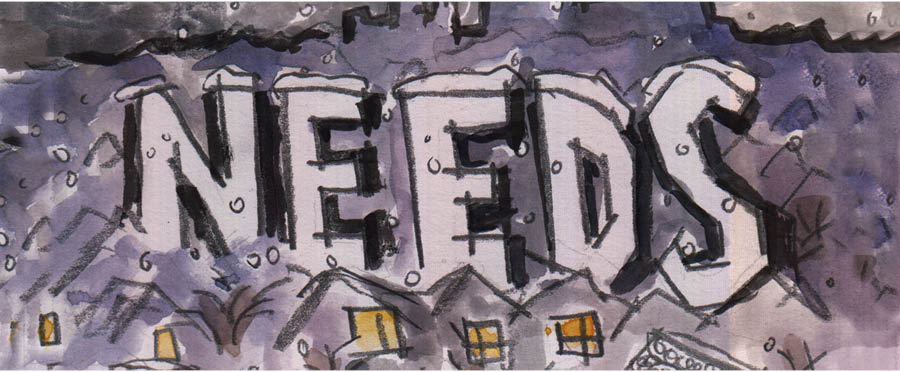Monsters and the Need to Check Under the Bed

What’s more believable: being struck by lightning, or being bitten by a vampire?
An average of fifty people are killed by lightning in the United States every year, so we’ll have to compare that to the number of people attacked by vampires annually. The number of vampire victims obviously spiked during years when Buffy the Vampire Slayer or The Vampire Diaries were on the air, and between 2008 and 2012, when quite a few vampire films came out, including Twilight, but overall it’s a pretty incredible number.
This season’s theme of Needs asks us to share experiences and community through storytelling, as well as wondering why it is we need stories in the first place. We can question why we read and write about certain ideas, plots, and tropes that pop up again and again in the world of storytelling. Monsters have made their way through legend and myth, science and religion, horror and fantasy, and they keep coming back no matter how many times they’ve been slain or befriended. Why do we need them to?
The Wikipedia page entitled “List of Fictional Vampires” is seemingly endless. Imagine what it would be like to have all of them roaming around the planet with us. Talk about overpopulation. That’s not to mention the legions of werewolves, zombies, and plain old ghosts floating around looking for something to do.
The way vampires are depicted varies from screen to screen, of course, from the sparkly and god-like Twilight vampires, the devilishly sexy Vampire Diaries brothers, the pale and silent murderers of Dracula’s era. My favorite are the ugly Buffy vampires that crawl out of the ground with an innate talent for martial arts. They’re bloodthirsty, sure, but refreshingly straightforward and soulless, at least for the most part.
Twilight and its compatriots have been mocked to un-death, but we still need them. Most of the people making fun of them on Twitter these days conveniently leave out the fact that they also read the books in middle school with their red, black, and white covers that felt like they understood what it was like to be misunderstood. The vampires in Twilight are frustrating to think about as an adult, because they’re all beautiful, strong, rich, immortal, and even smell better than humans, which essentially makes them invincible and uninteresting. They represent a superior species in a lot of ways that has the power to murder humans left and right, yet still shows interest in humanity beyond the desire for blood. The vampires are still capable of finding humans “special.” Teenagers need someone to tell them that they’re special, that they’re more than what they’ve told themselves. It’s not a perfect series by any means, with unrealistic romantic expectations and codependent relationships as a few possible angles for critique, but it does try to fill a specific teenage need to be special to someone else.
Meanwhile, the vampires in a show like The Vampire Diaries are constantly pushing back against the need to see the world in stark terms of good and evil; some of the characters do impressive moral gymnastics as they flip back and forth from sympathetic to murderous. The ugly, soulless monsters in Buffy the Vampire Slayer fulfill a need to fight evil in a concrete way, to make a noticeable dent in the forces of evil at work in the world.
All of these creatures reflect cultural and societal anxieties preying on our collective consciousness. We need the monsters in stories to show us a way to combat certain fears and frustrations. Werewolves and their involuntary transformation at the full moon illustrate a human fear of losing control of the self, while the zombie phase of pop culture revealed a preoccupation with the messiness of death and its inevitability. Witches represent the danger of female power, which alternates in different stories between something frightening and undesirable to something to be respected and revered. Magical abilities reveal a desire for individuality, and superheroes seek to resist human vulnerability. Ghosts show us to be uncomfortable in the dark and unknown.
We need these “monsters” to show us a way that the tangible fears of reality can be vanquished, as the old G.K. Chesterton quote goes. We put our fears in another form to reveal their weaknesses, to reveal the strengths hidden in ourselves. We use the stories to put the monsters in a ridiculous form, to laugh at the boggart like Neville Longbottom, so you can become friends with the monster under your bed.
Originally from Minnesota, Ellen Ray recently graduated from Boston College with a degree in English concentrating in creative writing. Amidst four years of writing workshops and analyzing independent films, she spent a semester wandering around New Zealand, including a night spent in a cave with local penguins. She has written for The Laughing Medusa, an all-female literary journal, as well as various nonprofit organizations. After various internships and an attempt at freelance writing, she found herself the Communications and Marketing intern at The Loft.
